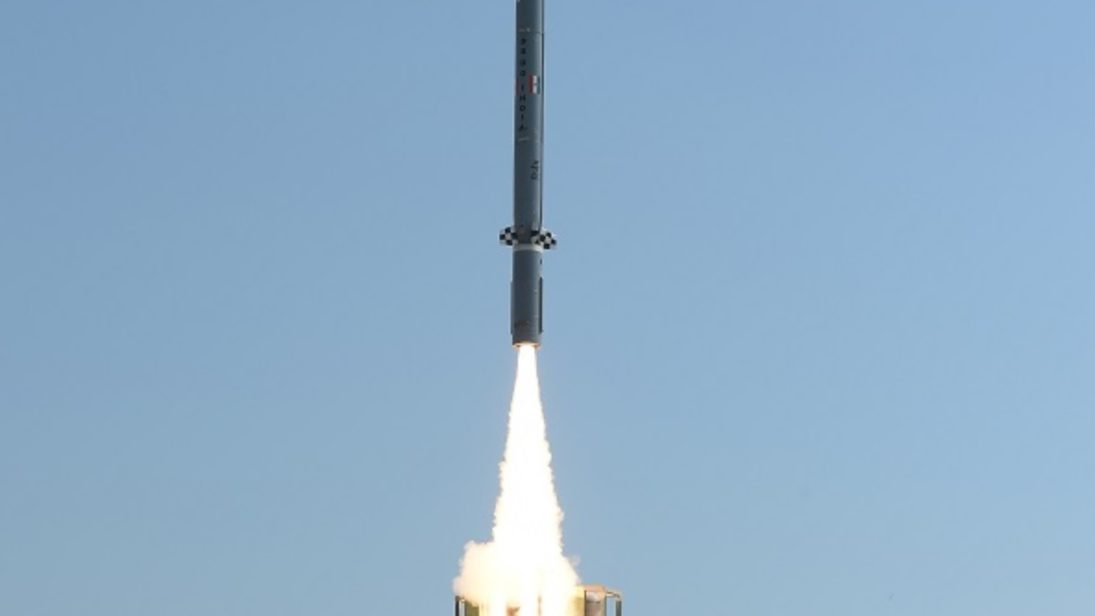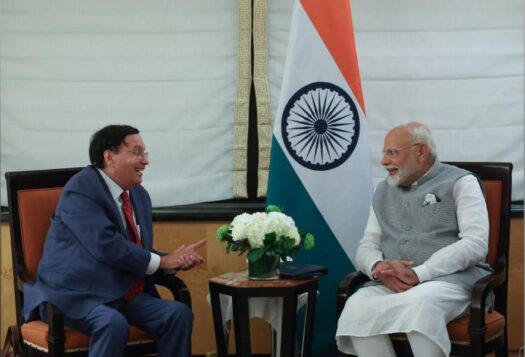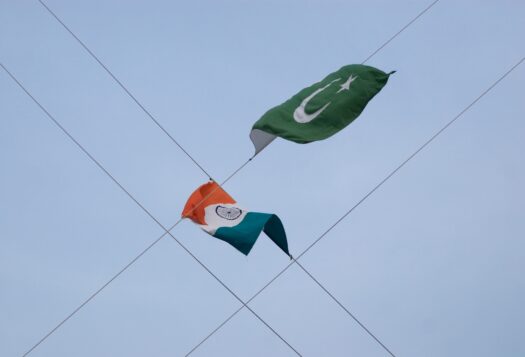
Strengthening India’s Operational and Deterrent Capability
By: Debalina Ghoshal
The operational capability of weapons delivery systems can only be ensured through conducting timely tests. Since nuclear deterrence rests on perceptions of a country’s nuclear capabilities, tests are sometimes required to demonstrate that such systems will perform as expected. Successful tests of weapon systems strengthen deterrence as they signal to adversaries that in case a limited or full-fledged conventional war leads to a nuclear war, the state is capable of inflicting catastrophic damage.
On November 7, India test fired its first nuclear-capable “land attack” cruise missile (LACM), the Nirbhay. The subsonic missile has a range of 1,000 kilometers and the ability to “loiter” in the air before striking its target. Tuesday’s test was significant because it was the first successful test of the missile after a series of failed tests since 2013 and a “partial success” in 2014. As such, while India can be pleased with the successful flight, it should not get carried away since the reliability of the missile system will need to be ensured by subsequent tests. Moreover, the Nirbhay does not present a credible deterrent to China given its shortened range–India would need longer range cruise missiles (preferably air-launched and submarine-launched) to deter China in this regard.
Given Nirbhay’s 1,000 km range, the missile could target certain regions in Pakistan when fired from the Indian border. As I have argued in a previous South Asian Voices article, strategic instability is not necessarily the result of two adversaries possessing different weapons systems. Pakistan has already developed or deployed the Babur and Ra’ad nuclear-capable cruise missiles, the latter of which is designed for tactical use on the battlefield. As such, India’s development of a sophisticated nuclear-capable cruise missile to answer Pakistan should not be viewed as creating strategic instability on the subcontinent.
The traditional deterrence strategy of Mutually Assured Destruction (MAD) generally relates to targeting countervalue targets, such as large population centers. MAD is generally viewed as a stable form of deterrence since neither adversary has an incentive to use nuclear weapons first given that massive retaliation from the opposing country is assured. However, when nations adopt a counterforce targeting strategy, which specifically targets nuclear assets at military installations and missile silos, nuclear deterrence is usually weakened as the incentives to strike first increase. In this scenario and given geographical proximity of India and Pakistan, Nirbhay could be seen to contribute to both countervalue and counterforce strategies, meaning its ultimate effect on deterrence stability is unclear.
The successful test firing of the Nirbhay missile is a crucial step in ensuring deterrence stability in South Asia by India matching Pakistan’s capabilities. Longer range air-launched or submarine-launched cruise missiles of 2,000-3,000 kms should also be developed as a counter against China.
Nirbhay Undermines Deterrence Stability in South Asia
By: Saima Sial
Earlier this week, India’s Defence Research and Development Organisation (DRDO) conducted a successful test launch of Nirbhay, a subsonic long-range land attack cruise missile, capable of being armed with a 300-kilogram warhead and with an estimated strike range of around 1000 kilometers (kms). Various news stories report that the DRDO is working on the air and sea versions of the cruise missile as well.
The development of the indigenous Nirbhay, which began in 2004 and was projected to be completed by 2016, has faced several issues such as technical difficulties in the missile flight control and navigation system. Of the four tests conducted before the current one, only one other test conducted in October 2014 had met testing criteria but was widely considered only a partial success. It is speculated that once operational, the missile would likely be deployed on board India’s ballistic missile nuclear submarine (SSBN) or aboard the Indian Navy’s surface ships.
India has already developed the dual use Brahmos with Russian assistance, a supersonic cruise missile capable of flying at a speed of Mach 2.8, with a declared range of 290 kms, with sea, air, and land versions. An extended range version (450 kms) of this missile was test fired earlier this year and a hypersonic version is also under development.
As opposed to ballistic missiles, the acquisition of a cruise missile capability means something different for India’s targeting strategy. Owing to its accuracy, a cruise missile is well suited for a counterforce role. Due to their ranges, the Brahmos and Nirbhay would enable India to deliver a strategic standoff capability on land as well as at sea.
Recent debates about India’s nuclear doctrine point to a possible shift in India’s nuclear doctrine from massive retaliation to that of a splendid first strike/preemptive counterforce strategy. Decapitating nuclear first use is a risk prone strategy. But even though it does not ensure complete confidence in eliminating the entire nuclear arsenal of the adversary, the development of certain capabilities may enhance a country’s confidence in implementing such a risky strategy. The combination of ballistic missile defense, nuclear submarines, as well as cruise missile capability could enhance India’s confidence in undertaking a splendid first strike against Pakistan.
India’s Agni series of ballistic missiles are already able to cover the whole of Pakistan, and are best suited for strategic deterrence, owing to low circular error probability (CEP) (a measure of accuracy). However, because of their pinpoint accuracy in targeting (if operationalized successfully), cruise missiles like Nirbhay could be suited for targeting Pakistan’s storage sites, command and control centers, radar installations, and bases. In fact, in a statement after Nirbhay‘s test in 2014, DRDO Director General Avinash Chander pointed to the missile’s cruise capability being used to “fill a vital gap in the war-fighting capabilities of our armed forces,” widely believed to be in support of India’s Cold Start Doctrine.
India’s move towards a counterforce targeting strategy will have dangerous ramifications for South Asian deterrence stability. India’s acquisition and perfecting of capabilities to implement its counterforce strategy against Pakistan will lead India to produce more fissile material, apart from investing heavily in enhancing its intelligence, reconnaissance, and surveillance (ISR) capabilities. For Pakistan, this would translate into ensuring the reliability of its nuclear deterrent through various measures including concealment and survivability apart from putting nuclear weapons at sea.
In addition to this, the challenge of putting cruise missiles to sea, through ships and submarines, will enhance chances of inadvertence and crisis instability. A better course of action for both South Asian neighbors would be to undertake confidence building measures aimed at avoiding inadvertence and non-attack on each other’s command and control centers and communication infrastructures to ensure the mutuality of deterrence.
***
Editor’s Note: Click here to read this article in Urdu; click here to read this article in Hindi


